Wonder how to keep your homemade bento fresh and safe until lunchtime? In this post, I’ll share the food safety tips for bento that we follow in Japan so you can safely prepare and enjoy delicious bento lunch at school or work.
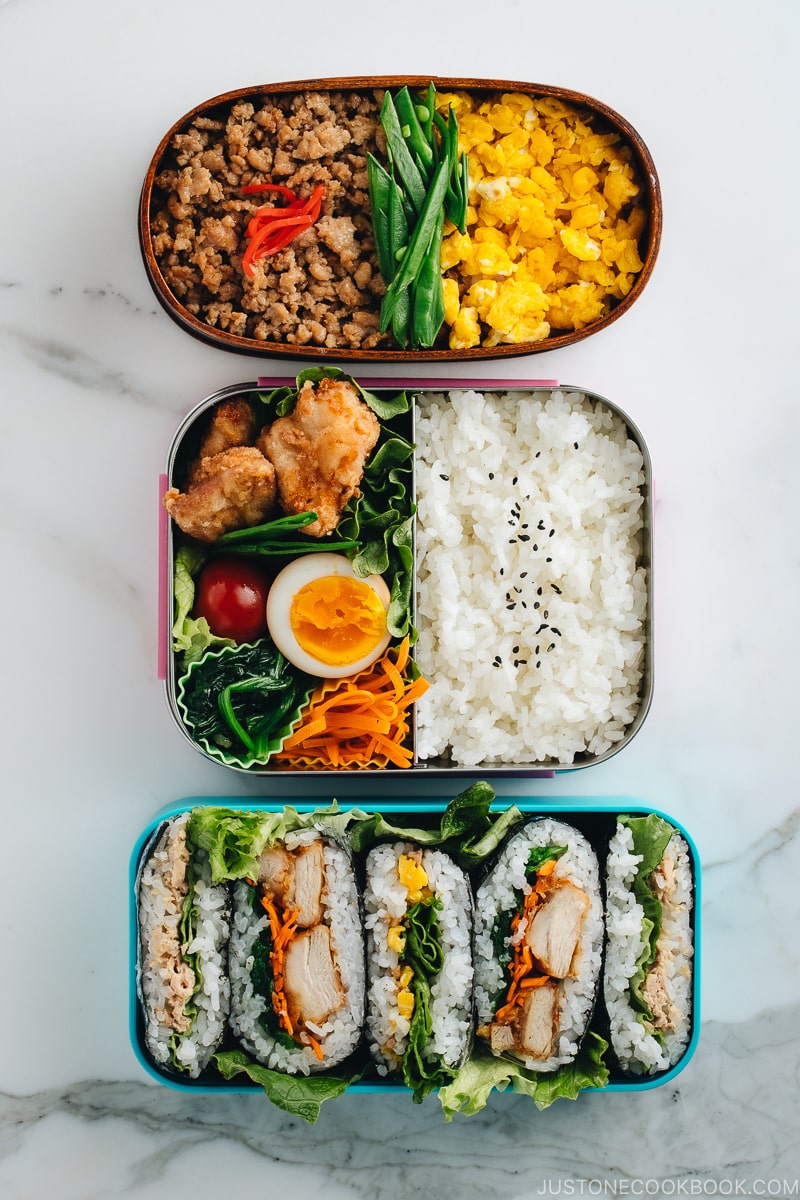
It’s common in Japan to pack an appetizing, healthy, and home-cooked bento lunch box to enjoy at school or work. Not surprisingly, bento culture is booming in popularity outside of Japan, and people around the world have started to make bento, too.
One question I often hear is “how do I keep my bento fresh and safe to eat?” The truth is, you must take the proper measures to reduce the risk of food poisoning from harmful bacteria*.
It’s not hard to do, though. You just need to follow a few key steps. In this post, I’ll cover the bento food safety rules and techniques that we follow in Japan so you can safely prepare delicious bento for your family to enjoy.
*Bacteria that cause food poisoning include Salmonella, E. coli, Campylobacter, Listeria, and norovirus.
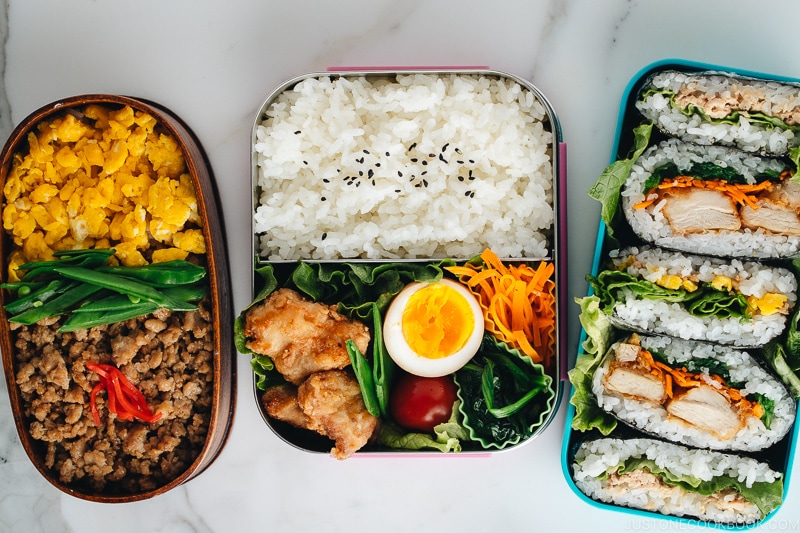
What is Bento?
Bento (弁当) is a single-portion and typically home-packed meal that originated in Japan. It’s enjoyed at room temperature for lunch at school, work, a picnic, or on a long journey. Classic bento features a variety of nourishing foods that are attractively arranged in a special lunch box.
In Japan, we prepare homemade bento in the morning and enjoy it a few hours later without reheating it. In addition, freshly made bento is widely available for purchase all year round, even during the hot and humid summertime. You’ll find them at supermarkets, convenience stores, and train stations where they’re called ekiben (駅弁, railway bento) and eaten during train travel.
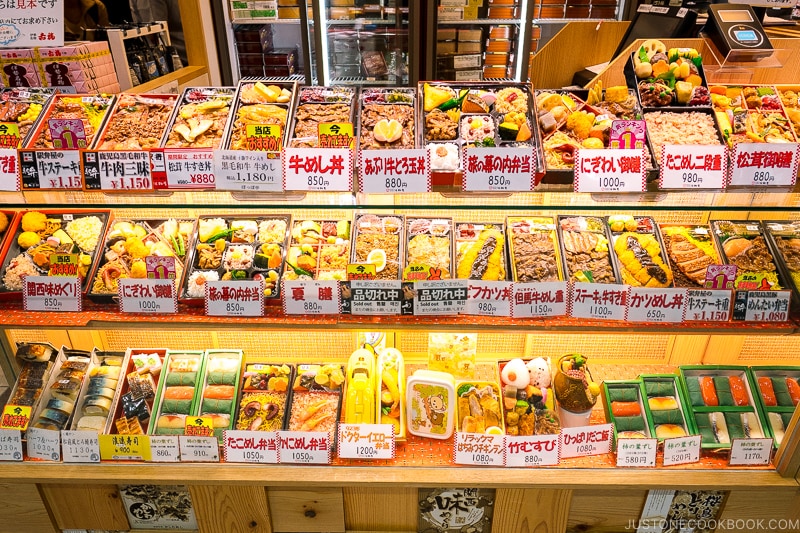
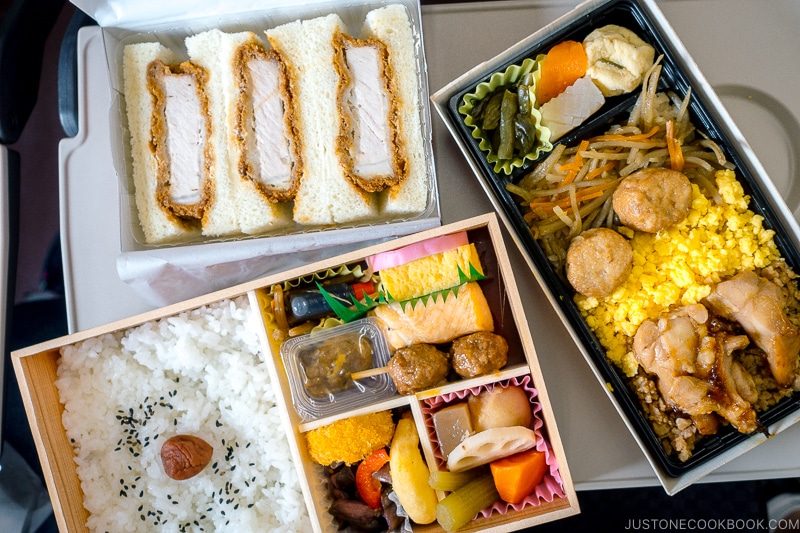
Control Moisture and Temperature for Food Safety
How do we keep harmful bacteria from growing in bento and causing food poisoning? The two key factors are moisture and temperature.
- Temperature: Foodborne bacteria breed between 46°F and 145°F (8–63°C) and most actively reproduce at 77–98.6°F (25–37°C). Growth is suppressed at temperatures below 46°F (8°C).
- Moisture: Bacteria that cause food poisoning grow best in moist environments. High humidity, condensation, and high-moisture ingredients can encourage harmful bacteria growth.
Take precautions to avoid these conditions, especially during summertime when the humidity and temperatures are high.
👉🏼 Takeaway: Keep bento below 46°F (8°C) until lunchtime, and remove as much moisture as possible from the food!
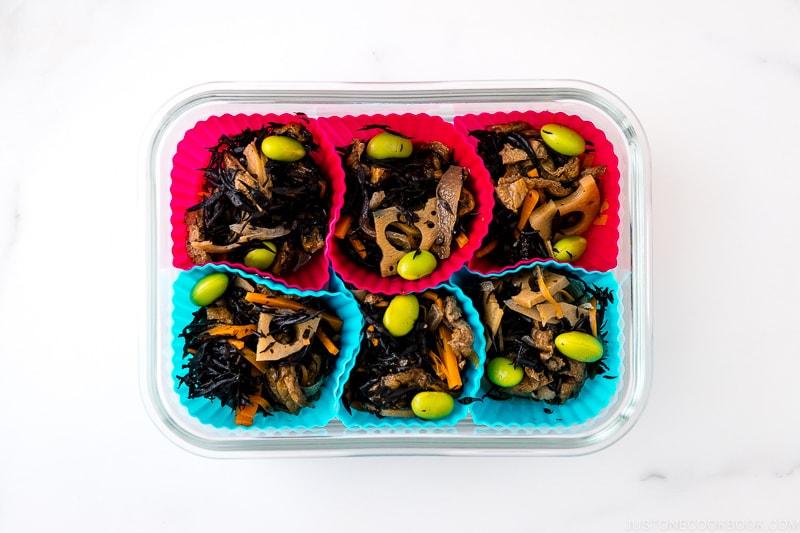
6 Rules for Bento Food Safety
To minimize a moist, warm environment and harmful bacteria growth, follow these essential steps:
- Thoroughly clean and dry your hands before you prepare the bento. Avoid touching the ingredients with your bare hands. Use utensils like chopsticks to handle the food; you can also wear food-handling gloves. Use plastic wrap to shape onigiri (rice balls).
- Clean/disinfect your equipment and thoroughly dry. Use detergent to clean well anything that touches the food like the lunch box, cooking utensils and tools, tableware, and cutting board. Very hot or boiling water is effective for disinfecting equipment. Thoroughly wipe everything with a clean cloth and air-dry in a well-ventilated place.
- Heat the bento food and ingredients properly. Cook or reheat the food to at least 158–165°F (70–75℃) internally for at least 1–2 minutes.
- Cool the food completely and quickly as soon as possible after it’s cooked or reheated. Once cooled, the food is safe to pack next to other cool/cold foods in the lunch box.
- Close the bento’s lid only when the food is cool. You’ll trap condensation if you close the lid on warm foods, and the moisture will encourage bacteria growth.
- Keep the bento cool for transport and storage. Place the packed bento in the fridge until it’s time to leave home. Then, keep it at 46°F (8°C) or cooler until lunchtime. See my tips below for how to store the bento safely.
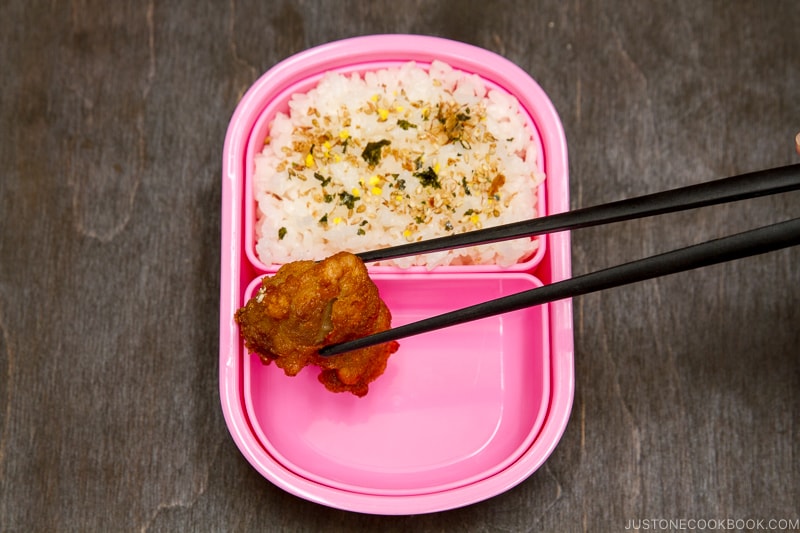
Tips To Prepare, Pack, and Store Bento
Following are the tried-and-true methods to safely cook, cool, pack, and store your bento.
How To Cook/Reheat the Food
In the morning when packing your bento, you have a few options:
- Cook dishes fresh in the early morning. Ensure that foods are completely cooked through with no raw or undercooked parts. Cook the food to at least 165°F (75℃) internally for more than 1–2 minutes.
- Reheat last night’s leftovers. Thoroughly reheat the food to its center to at least 165°F (75℃). Use a toaster oven or frying pan for this; don’t use a microwave, which heats food unevenly.
- Reheat previously frozen foods that you prepped ahead of time. Move the single-portioned frozen food to the refrigerator to defrost overnight. The next morning, reheat it thoroughly. See how to freeze food for bento and freezer-friendly bento dishes.
- Heat many ingredients that are normally eaten cold. It’s safer to heat foods like ham and fish cake (such as kamaboko and chikuwa) once, especially in the summertime. You don’t need to heat marinated vegetable side dishes or pickles.
How To Cool and Pack the Food
Plan extra time to let the food cool completely before packing it. This is a crucial step to keep your bento fresh and safe.
- To speed cooling, use a fan, set the food on a cooling rack, and/or spread the food on a tray or plate (over an ice pack). It’s especially important to let the steam escape from hot rice.
- Wait until a food is cool before you transfer it to your bento box.
- Pour off any liquids from the food. Also, use partitions and serving cups to separate dishes in the lunch box. This keeps residual liquid from leaking onto other foods and increasing moisture.
- Use a separate container for condiments like soy sauce, ketchup, or dressing. Season just before eating.
- Close the container’s lid only once the food is completely cool.
- Keep the packed bento in the fridge until it’s time to leave home.
How To Safely Store the Bento
- Understand the storage environment where the bento will stay until lunchtime. Adjust the foods you pack and the method you use to store your lunch accordingly.
- Use an insulated lunch bag or cooler. For climate-controlled conditions like school or an office, an insulated bag works fine. For harsher conditions, you may need a personal-size cooler or ice chest.
- Add ice packs. I recommend 2–3 ice packs, but use more on hot and humid days. Place one of the packs on top of the food container to keep the air cool inside the lunch bag.
- Wrap your bento box in a kitchen towel or handkerchief (we use furoshiki). This protects the food from condensation produced by the ice packs.
- Store in a cool place until lunchtime, away from direct sunlight. Use the refrigerator if your lunchroom has one. With a fridge, you can use fewer ice packs or skip altogether.
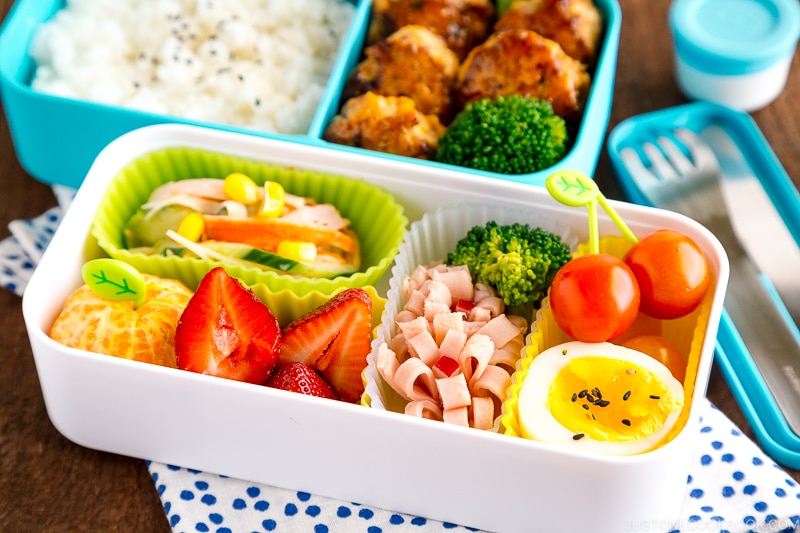
Types of Bento-Friendly Foods
Here are some types of foods that keep well in bento and taste good at room temperature:
- Deep-fried foods – Thoroughly cooked to the center under high temperature, deep-fried foods work well in bento and include karaage (Japanese fried chicken), ebi fry (Japanese fried shrimp), and tempura. Avoid croquettes (korokke) in the summertime as they contain potatoes, which spoil more easily.
- Grilled foods – It’s safer to include foods with less moisture, and grilling evaporates liquids on ingredients during cooking.
- Salted ingredients – Salt absorbs the moisture of ingredients to suppress bacteria growth. That’s why bento foods are seasoned strongly with soy sauce, miso, or salt like Japanese salted salmon and onigiri, which we shape using palms rubbed with salt.
- Foods seasoned with sugar – Sugar also absorbs the moisture of ingredients to reduce bacteria breeding. Dishes seasoned with sugar include soboro don (ground chicken bowl), niku miso, and negi miso.
- Ingredients with antibacterial properties – Ginger, garlic, wasabi, shiso (perilla) leaves, and Japanese pickled plums (umeboshi) suppress the growth of bacteria. That’s why we often place umeboshi in the bento rice to help keep it fresh.
- Vinegared foods – Since vinegar also has antibacterial qualities, pickles (tsukemono) or marinated vegetables are safe to pack. Be sure to drain off their liquid.
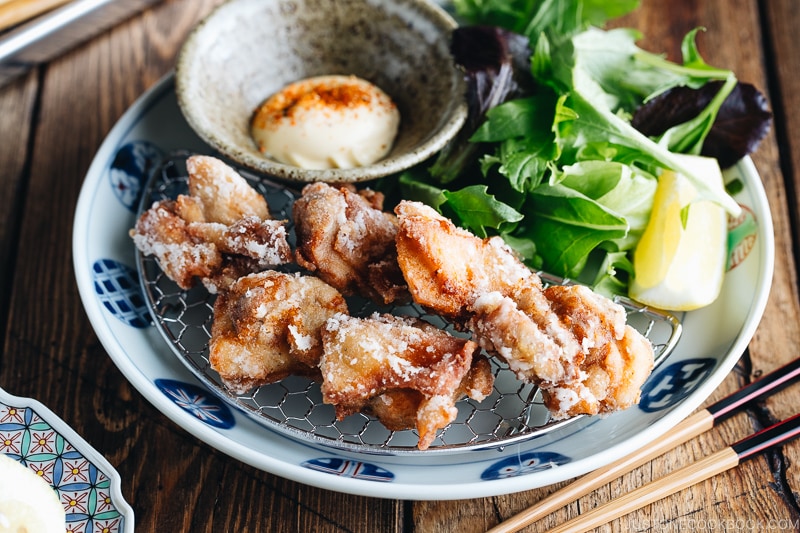
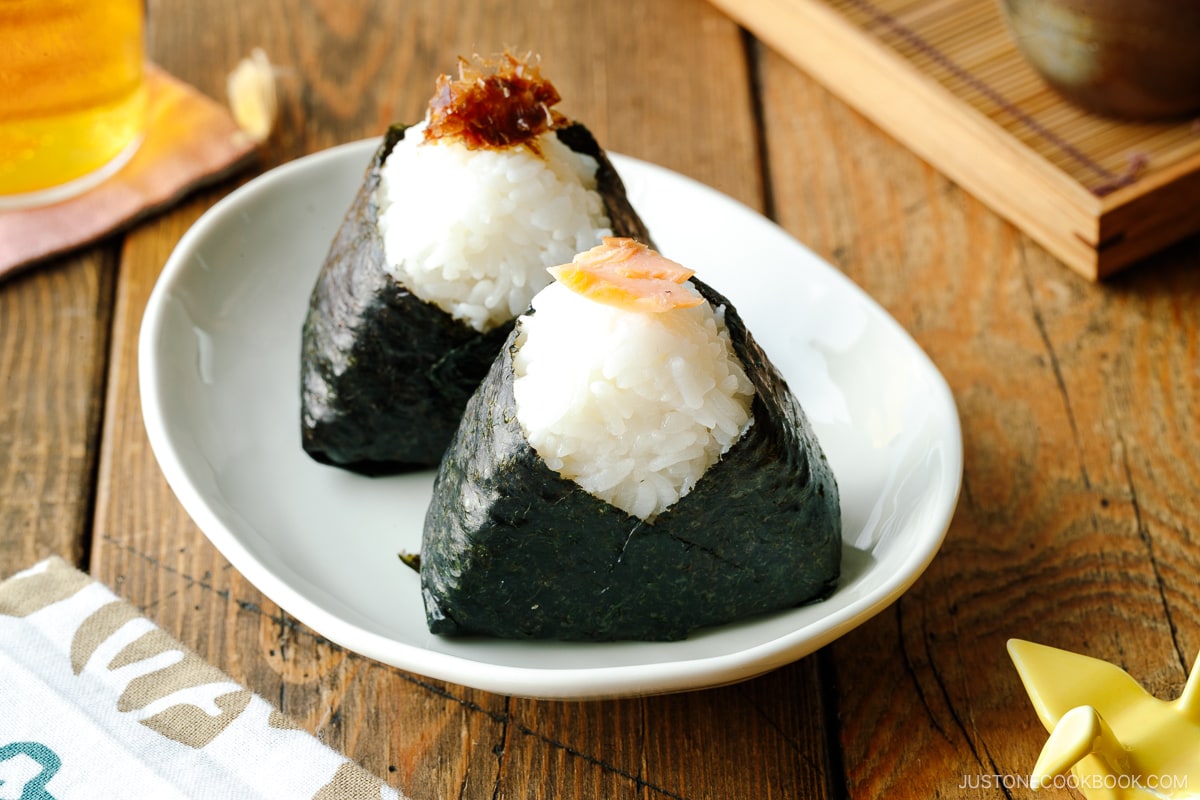
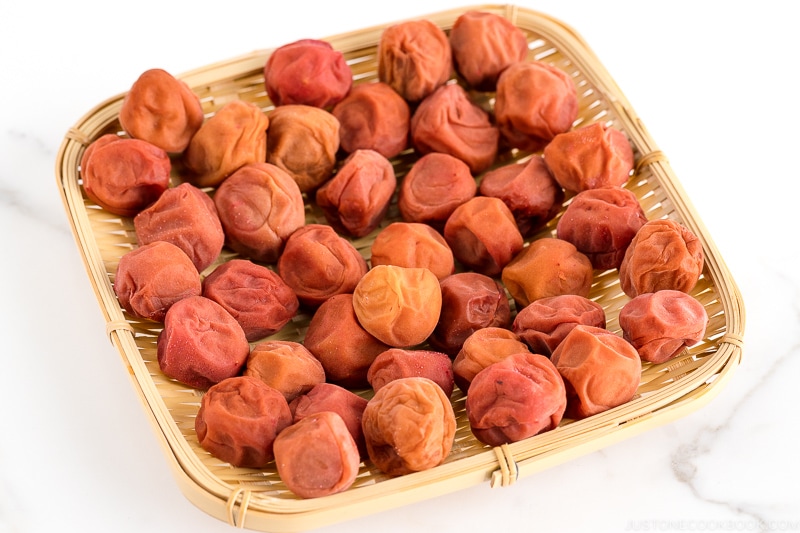
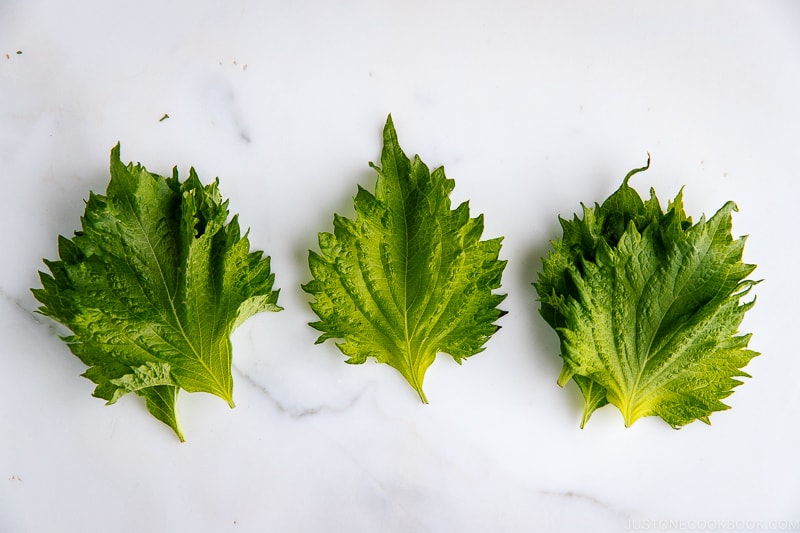
Foods To Avoid in Bento
Don’t pack dishes that are prone to spoilage at room temperature, especially during the hot and humid summer months.
- Avoid raw or undercooked fish and meat – These are high-risk foods that can easily spoil and cause food poisoning.
- Avoid undercooked eggs – Skip soft-boiled, poached, or runny eggs. Opt for well-cooked tamagoyaki, hard scrambled eggs, and hard-boiled eggs.
- Avoid foods with liquids – Before packing, pour off simmering liquid or runny sauces from your dishes. You can avoid liquids all together with “dry” dishes like grilled or fried foods.
- Avoid raw produce – Raw cut fruit, vegetables, and fresh salads can leak moisture to other foods and spoil easily, especially in the summertime. The exceptions are whole cherry tomatoes and whole berries, which won’t release liquids if uncut. Wedges of apple soaked in salt water also work.
- Avoid potatoes and tofu (summer) – On hot days, don’t include high-moisture ingredients like tofu, potatoes, and taro (since starchy vegetables retain moisture). These foods are safer to add during the cooler months.
- Avoid simmered foods (summer) – In hot and humid conditions, it’s best to skip simmered dishes (nimono), which retain the liquid in which they’re cooked. The exception is kimpira-style dishes where the liquid is cooked off. You can add nimono in cooler and drier conditions if you drain the liquid well.
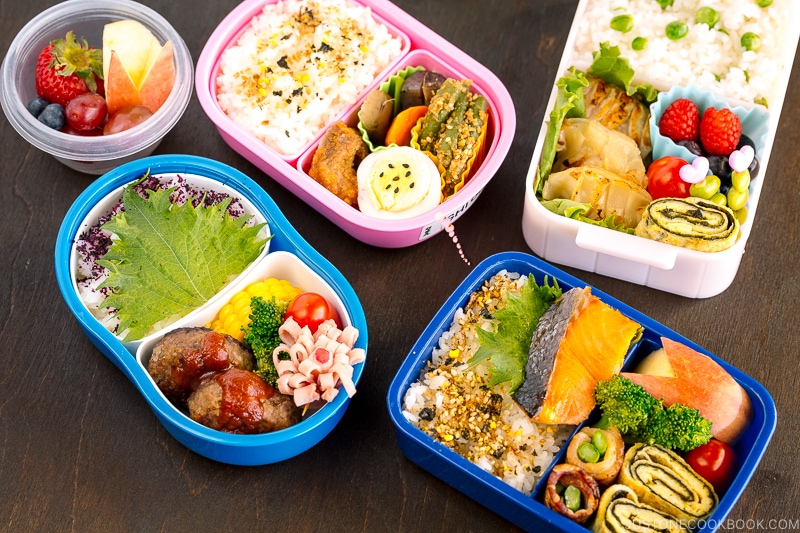
How To Pack Hot or Cold Foods
If you want to pack hot or cold foods, here are my recommendations:
- Keep hot foods in a thermos. Soups, stews, pasta, and noodles work great in a hot thermos. Disinfect the thermos before using with two changes of boiling water.
- Store cold foods with ice packs or in the fridge. Use a paper towel to dry off excess moisture from fresh fruits and salads. Use extra cold packs or store in the fridge, if you have one. Make sure the food is cold when you’re ready to eat. If it’s not, then don’t consume it.
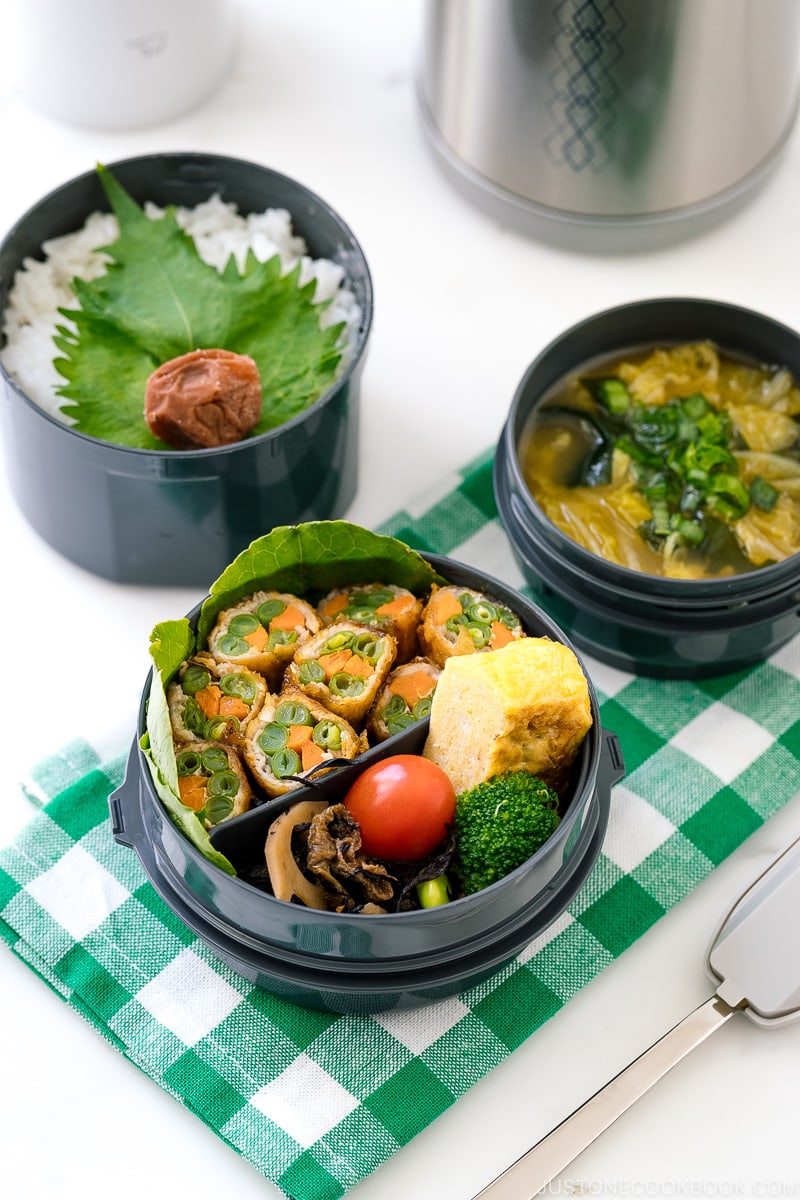
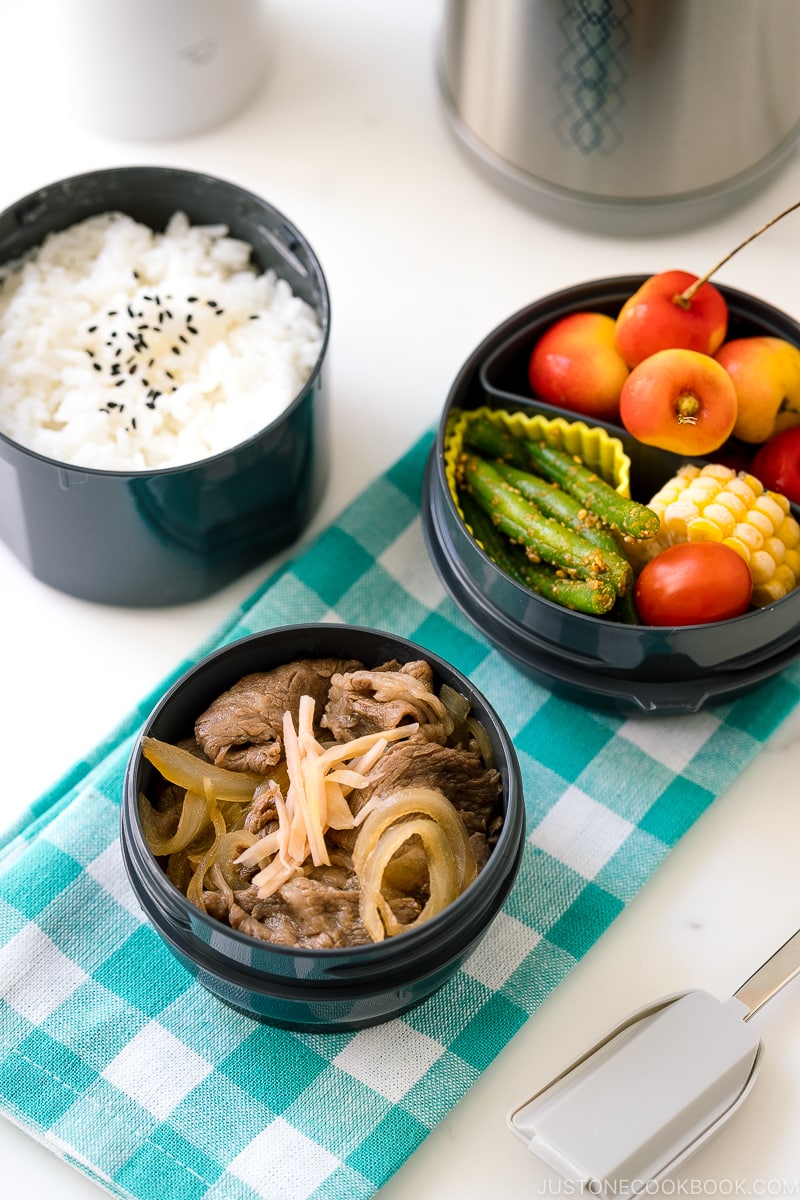
Bento-Friendly Recipes You’ll Love
- Chicken: Karaage, Chicken Katsu, Teriyaki Chicken Meatballs, Soboro Don, Sweet and Sour Chicken Meatballs
- Beef: Simmered Beef with Ginger, Teriyaki Steak Rolls, Gyudon
- Pork: Ginger Pork, Baked Tonkatsu, Gyoza, Braised Pork Belly
- Seafood/Fish: Shrimp Tempura, Ebi Fry, Eggplant Unagi Don, Teriyaki Salmon, Miso Salmon, Japanese Salted Salmon
- Vegetarian: Soba Salad, Ganmodoki (avoid in summer)
- Eggs: Tamagoyaki, Simple Tamagoyaki, hard-boiled Ramen Eggs, hard scrambled eggs in Soboro Don
- Vegetable Sides: Blanched Broccoli with Sesame Oil, Easy Carrot Salad, Green Bean Gomaae, Kinpira Gobo, Kinpira Renkon, Hijiki Seaweed Salad, Spinach with Sesame Miso Sauce, Bean Sprout Namul
- Rice and Noodles: Onigiri, Japanese Steamed Rice, Yakisoba, Ketchup Spaghetti, Miso Butter Pasta
- Sandwiches: Tamago Sando (Japanese Egg Sandwich), Onigirazu, Katsu Sando
More Bento Tips
Editor’s Note: The post was originally published on September 27, 2012, and updated with more detailed information on August 7, 2024.